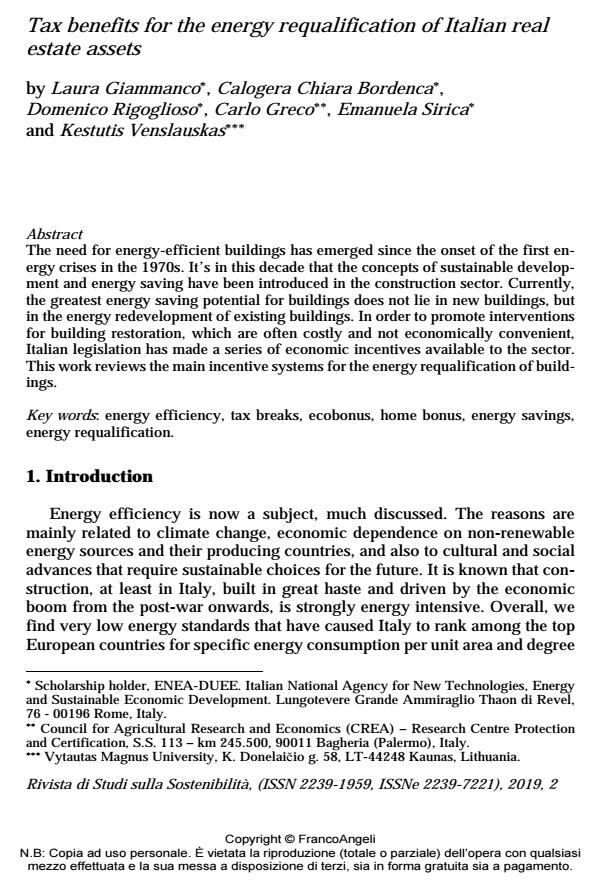Tax benefits for the energy requalification of Italian real estate assets
Journal title RIVISTA DI STUDI SULLA SOSTENIBILITA'
Author/s Laura Giammanco, Calogera Chiara Bordenca, Domenico Rigoglioso, Carlo Greco, Emanuela Sirica, Kestutis Venslauskas
Publishing Year 2020 Issue 2019/2 Suppl.
Language English Pages 17 P. 249-265 File size 106 KB
DOI 10.3280/RISS2019-002-S1016
DOI is like a bar code for intellectual property: to have more infomation
click here
Below, you can see the article first page
If you want to buy this article in PDF format, you can do it, following the instructions to buy download credits

FrancoAngeli is member of Publishers International Linking Association, Inc (PILA), a not-for-profit association which run the CrossRef service enabling links to and from online scholarly content.
The need for energy-efficient buildings has emerged since the onset of the first energy crises in the 1970s. It’s in this decade that the concepts of sustainable development and energy saving have been introduced in the construction sector. Currently, the greatest energy saving potential for buildings does not lie in new buildings, but in the energy redevelopment of existing buildings. In order to promote interventions for building restoration, which are often costly and not economically convenient, Italian legislation has made a series of economic incentives available to the sector. This work reviews the main incentive systems for the energy requalification of buildings.
Keywords: Energy efficiency, tax breaks, ecobonus, home bonus, energy savings, energy requalification.
Laura Giammanco, Calogera Chiara Bordenca, Domenico Rigoglioso, Carlo Greco, Emanuela Sirica, Kestutis Venslauskas, Tax benefits for the energy requalification of Italian real estate assets in "RIVISTA DI STUDI SULLA SOSTENIBILITA'" 2 Suppl./2019, pp 249-265, DOI: 10.3280/RISS2019-002-S1016